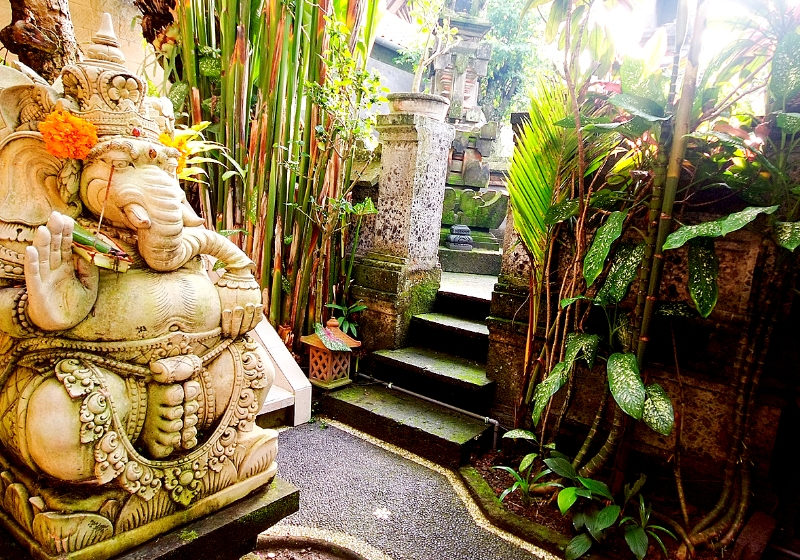
Turning a dull backyard into a mystical tropical paradise.
Having my own gardening website and spending a lot of time on Pinterest for it, One of the most mesmerizing landscaping styles I would frequently come across has been the Balinese style. I believe it to be an exotic, and under-used style of tropical landscaping which also makes it unique and not likely something your neighbors will be adopting anytime soon.

Let’s Start With The Basics…
Bali is a humid, beautiful tropical island in a chain of islands that make up the country of Indonesia in Southeast Asia.
So, what exactly makes makes a garden a Balinese-style garden? Mainly, this look can be achieved by using certain plant choices, decorative items, and other things like water features common to the island of Bali.
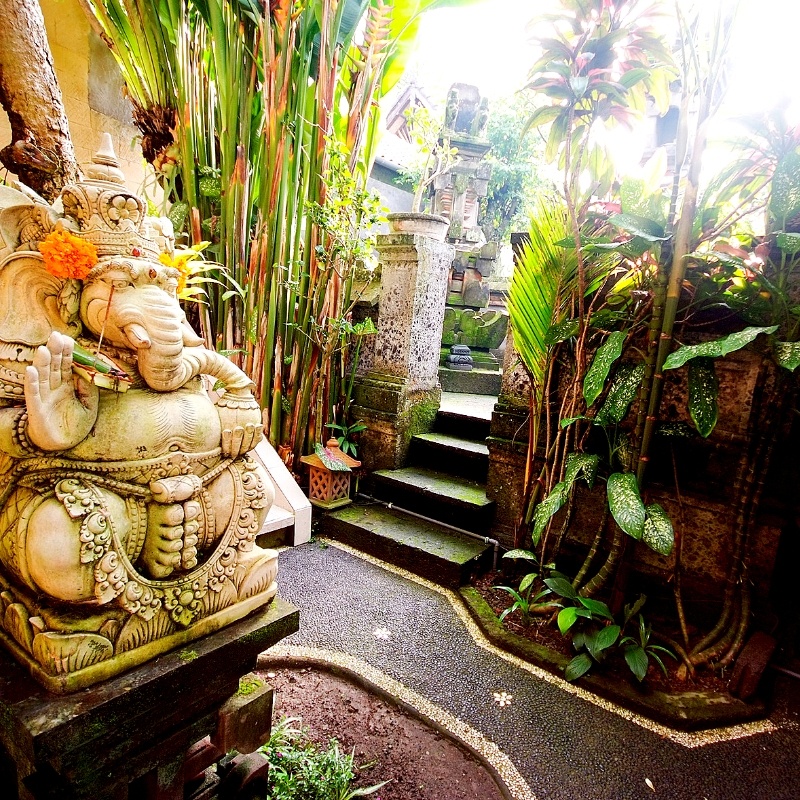
You can go all-out or keep it relatively simple by using as many or as few of these elements as you wish. You could transform an entire backyard space or only a small corner of your garden or patio into an alluring outdoor getaway.
Let’s get started with the most popular elements found in most Balinese gardens.
Choosing Garden Decorations & Sculpture
What would catch your interest and give you a feeling of being ‘somewhere else’? You could choose garden pagodas, southeast Asian-styled elephants, sitting Buddhas and Buddha heads, carved stone lanterns, containers, bird baths, antique carved wood panels and more.
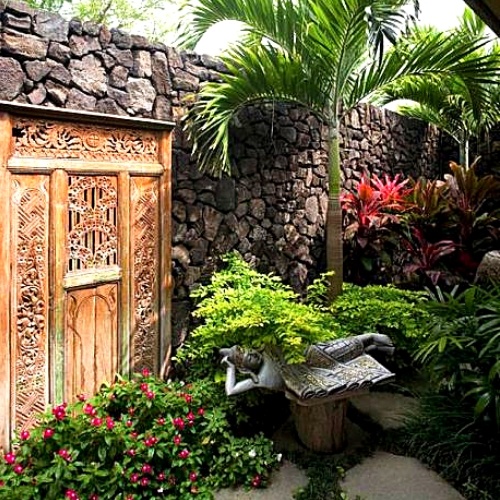
When using fencing or attempting to hide something you may want to hide like an air conditioning unit, fencing typically used in Bali is bamboo or reed fencing. Reed fencing is more economical than bamboo and widely available at garden and home centers. Keep in mind the Balinese use either naturally dark types of bamboo or bamboo that has had a dark stain applied to it. Lighter colored bamboo is more common to Japan than Bali.
For patios there are Balinese style area rugs, candle holders, urns, carved wood sculptures, and well the list is almost endless.
Plants Popular In Bali And Southeast Asia

Tropical Plants For Northern Climates
I have some tips for Northern gardeners that cannot grow tropicals through the Winter.
One strategy you can employ is to only use plants that you can regrow each year from inexpensive seed or bulbs. The Castor Bean plant and Red Shield Hibiscus seeds can both be sources online and replanted in the Spring after your last frost date. I’ve grown these plants from seed and they are both easy. Amaranthus ‘Molten Fire’ is another good choice from seed.
Tropicals that grow from bulbs can be treated similarly, with a little more cost than seeds but still less than buying new plants each year. These include Cannas, Taro (Elephant Ears), and Split-leaf Philodendrons.
The Giant Golden Pothos Vine can be grown from cuttings (rooted in water) just like it’s smaller common houseplant cousins. I’ve seen mail-order cuttings sold online for as little as $4/each.
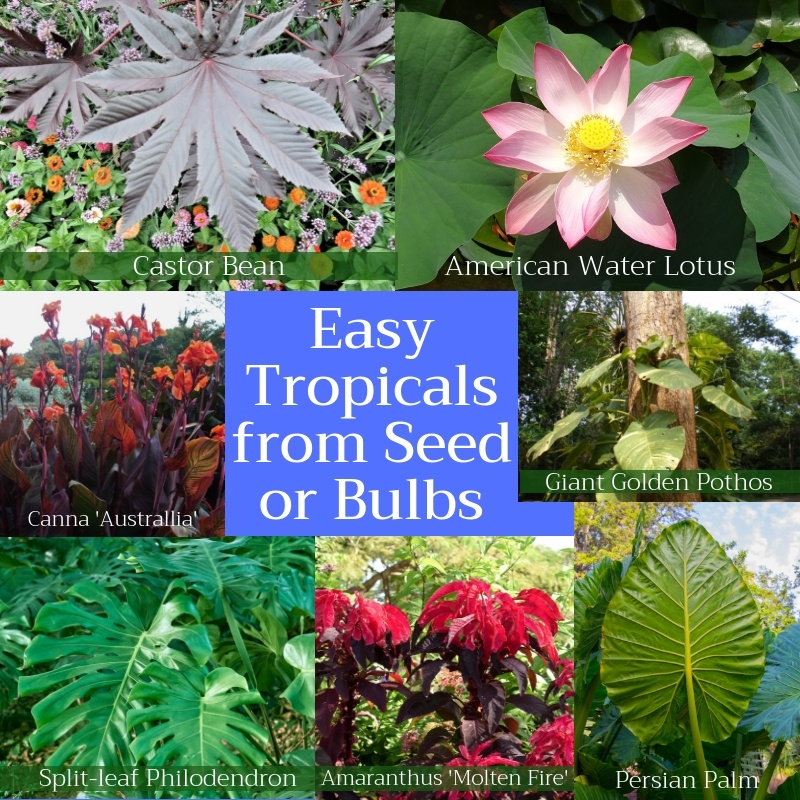
Some varieties of Lotus will grow and survive up to zone 4! There are 2 main species of Lotus; the American Water Lotus (Nelumbo Lutea) thrives in zones 4-11. This is a hardy type of Lotus. The kind you don’t want if you live in the North is the Sacred or Indian Lotus (Nelumbo Nucifera) which does not tolerate freezing temperatures (zones 8-12).
Lotus is not difficult to grow from either seed or mail order tubers.
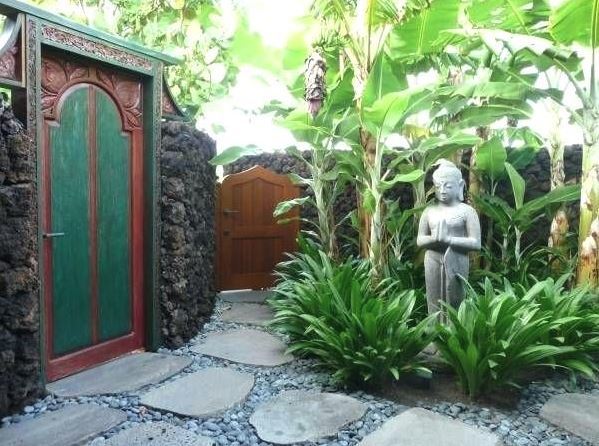
Small, “Snack-Sized” But Still Adorable Project Ideas
Not quite ready for a backyard makeover? Perhaps you do not have the garden space, We talked earlier about smaller projects such as a patio transformation or a water feature.
If you don’t already have one of these, consider adding one or more of the following:
- A garden pagoda.
- Elephant or a Buddha statuary.
- Carved stone lanterns for the patio or poolside.
- Transform the kids treehouse into a Balinese “house”.
- Dark lava stone water basins.
- Bali-style container pond.
- Carved stone bird bath.
- Dark brown or black river stones in and around landscape beds.
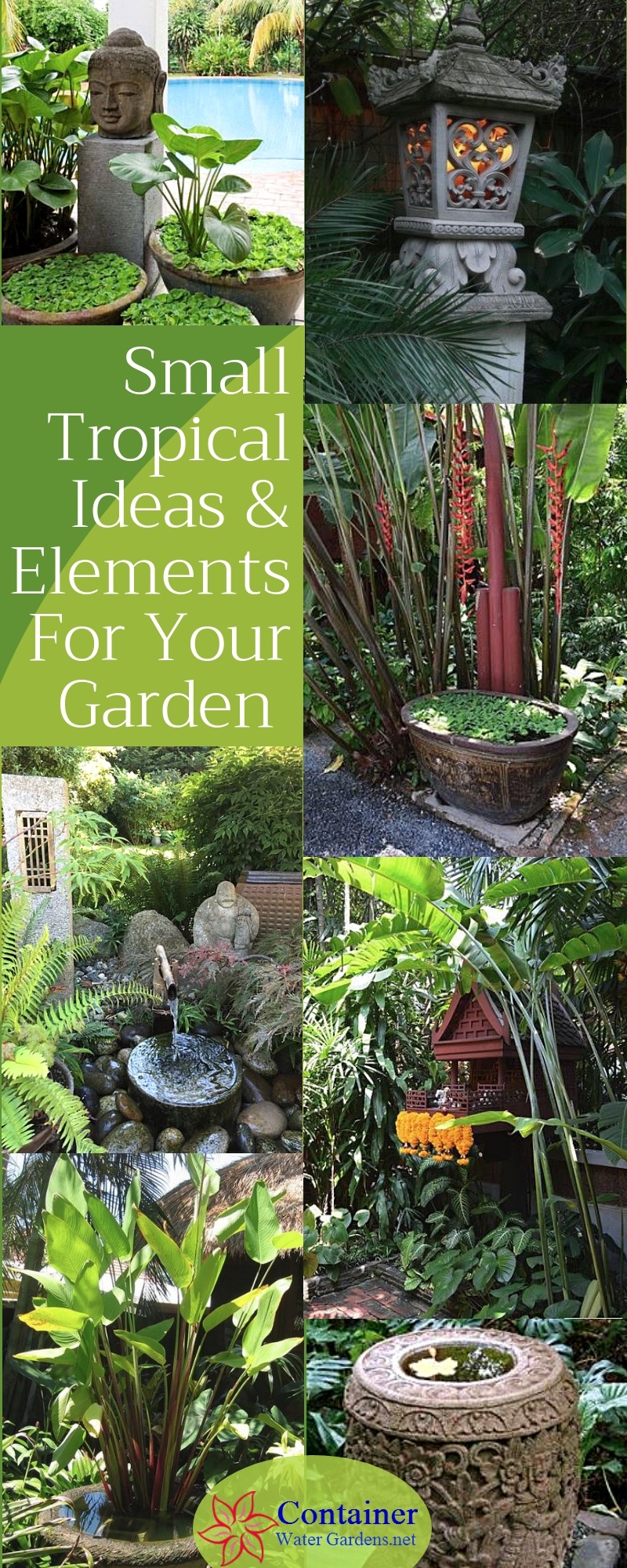
Sourcing Balinese Outdoor Garden Decor
I found these 3 online sellers of Balinese garden decor that seem to be reputable. If you are (like me) unsure about buying from unfamiliar sources, I’m happy to reveal that I’ve found most of these decorative items on Amazon and Ebay. As a disclaimer, I am an Amazon affiliate but I only recommend products I believe to be useful or helpful to my readers.
Here are the 3 non-Amazon sources:
Helpful Links:
How To Grow Lotus From Seed Or Tubers
Stunning Water Features You Can Make In Almost No Time
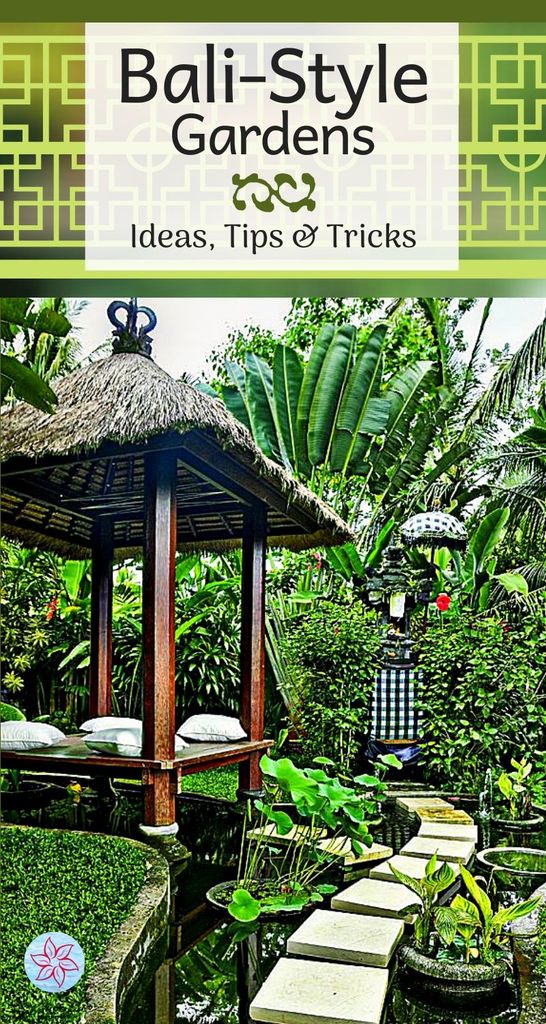
PIN ME!!!
